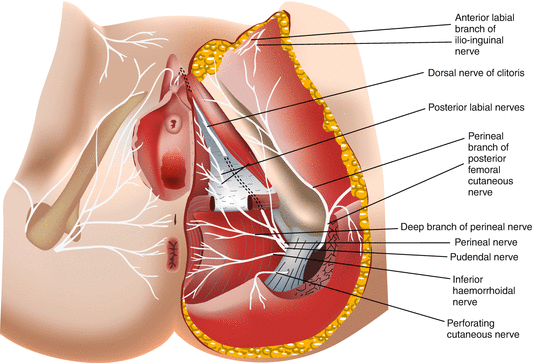Nutrition plays such an important role in our pregnancies and post-partum periods. Breastfeeding requires time…

Pudendal Nerve Pain in the A#$
Pain in your pelvis can be debilitating and can decrease your ability to go to work or school, complete childcare and homecare duties, and cause issues with our relationships with partners, families, and friends. There can be many different causes for pelvic pain. I’m going to keep the focus of this conversation on irritation of the pudendal nerve or pudendal neuralgia.
Symptoms of pudendal neuralgia can be varied with pain, bowel, bladder, and sexual symptoms. This can make diagnosis of pudendal neuralgia challenging. The pudendal nerve arises from the spinal cord in the sacrum and then travels between the Sacrotuberous and sacrospinous ligaments in the back of the pelvis through Alcock’s canal. These two areas are common areas for increased pressure on the pudendal nerve. From there the nerve splits into three main branches:
1) the inferior rectal that supplies the external anal sphincter,
2) the Perineal branch that supplies the labia majora and vagina in women and the scrotum and penis in men,
3) the dorsal branch that supplies the clitoris in women and the penis in men.

With that wide distribution of where the branches of the nerves go, it is easier to understand how the pudendal nerve irritation can affect bowel, bladder, and sexual functions.
Common symptoms that people have with pudendal neuralgia can include:
Pain, numbness and tingling, or irritation of the perineum, genital region, anus, or sit bones.
Sensation of sitting on a tennis ball or having something in rectum or vagina
Pain with bowel movements, urination, or wearing underwear
Pain with sex, pain with orgasm, or difficulty having an erection in men
Treatment requires a team effort. This can include a urologist, urogynecologist, gynecologist, pain anesthesiologist, and family medicine providers on the medical side. Because of how pain effects our brain, it can also be important to have a mental or behavioral health therapist on the team. Pelvic floor therapy should also be an integral part of this team.
Pelvic floor physical therapy will help with connective tissue, joint, muscle, and nerve mobiltiy throughout the pelvic region to decrease pressure on the pudendal nerve and help with decreasing pain. Physical therapy will also look at how well the pelvic floor, abdominal wall, hip, and back muscles move and make sure that there is good coordination in the system for decreased pressure on the nerve. This can include exercises for stretching, strengthening, and ways to add movement to the system with activities that can cause pain.
Pelvic pain can be frustrating finding the answer to what is causing the pain, how to treat it, and who should be on your care team. Finding a pelvic floor physical therapist who is comfortable treating pain is a great first step in finding a good medical team to start healing.
We offer a free, 15 minute phone consultation to answer any questions and help you find the best direction for your care. Click here to schedule



